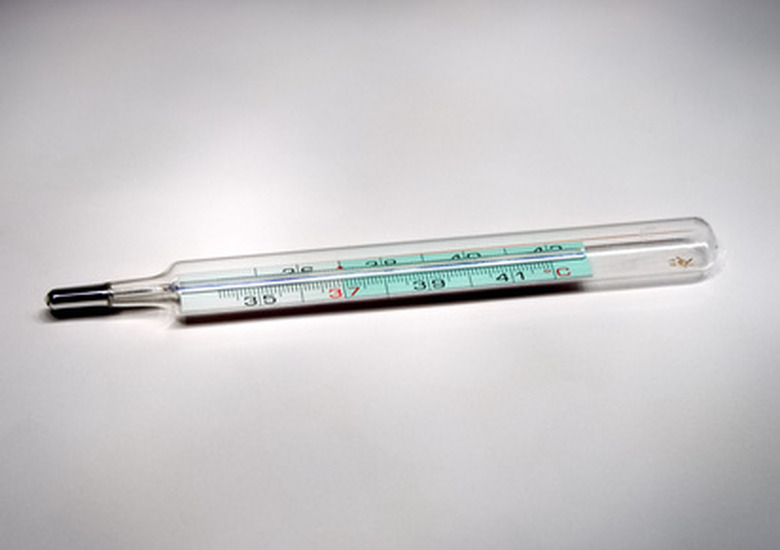The Uses Of Mercury In Glass Thermometers
Mercury has been frequently used in thermometers because it remains in liquid form throughout a wide range of temperatures: -37.89 degrees Fahrenheit to 674.06 degrees Fahrenheit. In a thermometer, a glass bulb attached to a glass capillary tube is filled with mercury. The rest of the tube may be a vacuum, or it may be filled with nitrogen. As the mercury heats up, it rises in the tube, and as it cools, it retracts back into the bulb. The height at which the mercury rests corresponds to calibrated marks on the side of the tube, allowing you to read the temperature of the item or air that is being measured.
Freezing
Freezing
Mercury will freeze solid at -37.89 degrees F, and if there is nitrogen in the space above the mercury, it will flow down and become trapped below the mercury when it thaws. It will then need to be taken in for repair before it can be used again. For this reason, mercury thermometers are not recommended for cold climates and should be brought indoors when the temperature starts dipping below -30 degrees.
Common Uses Today
Common Uses Today
Best used to measure high temperatures, mercury thermometers are still widely used in meteorology and in high temperature places such as autoclaves, which are high-pressure vessels used to sterilize or process equipment.
In some cases, there are federal or state regulations that require the use of mercury-containing thermometers, although some alternatives such as digital thermometers and non-mercury liquid-in-glass thermometers are being used more frequently.
Phased Out or Banned
Phased Out or Banned
Mercury is poisonous and is being phased out of use in many industries. In several states it is now illegal to sell mercury thermometers, and many countries have banned the use of mercury thermometers in hospitals and schools.
The United States Environmental Protection Agency announced in 2010 that it will be working with industrial stakeholders and laboratories to phase out mercury-containing thermometers to reduce the release of mercury into the environment through spills, disposal and breakage.
Cite This Article
MLA
Patrick, Taylor. "The Uses Of Mercury In Glass Thermometers" sciencing.com, https://www.sciencing.com/uses-mercury-glass-thermometers-7286462/. 24 April 2017.
APA
Patrick, Taylor. (2017, April 24). The Uses Of Mercury In Glass Thermometers. sciencing.com. Retrieved from https://www.sciencing.com/uses-mercury-glass-thermometers-7286462/
Chicago
Patrick, Taylor. The Uses Of Mercury In Glass Thermometers last modified March 24, 2022. https://www.sciencing.com/uses-mercury-glass-thermometers-7286462/
